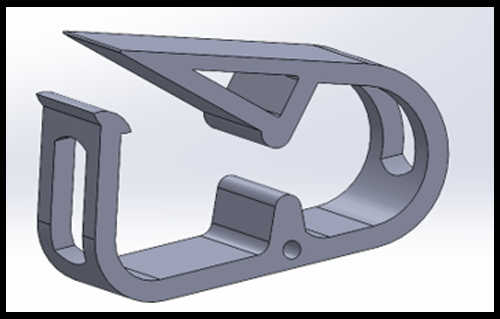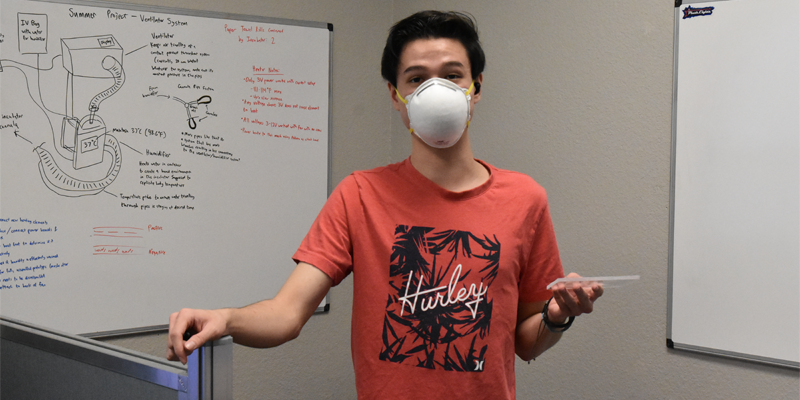My name is Jonathan Ince, I am going to be a senior at Texas Tech University majoring in mechanical engineering, and I was incredibly fortunate to participate in an internship at Zewski Corporation over the summer. This being my first internship and engineering-centric work experience, I had plenty of things to learn regarding machines and equipment, the biomedical field that Zewski is focused on, and engineering as a whole. At first, it felt like there was so much to learn and that my lack of experience would hold me back, but with the help of Larry, Tyler, and the other employees and interns, this seemingly massive undertaking became far more manageable.
SolidWorks Introduction and First Models
I entered the Zewski office with little more experience than what I had learned in some of my college classes. While these classes were incredibly helpful and informative, they focused on the math that goes into engineering work rather than what engineers actually do. My first goal was to familiarize myself with SolidWorks, learn its many tools, and be ready to model more complicated parts and assemblies in the coming weeks. Although I was essentially learning an entirely new program, my previous experience with AutoCAD and, more recently, Autodesk Inventor made the process a bit easier. Naturally, there were still occasional issues with my sketches not being complete and refusing to extrude properly or other nuances exclusive to SolidWorks. But in just a few days, I was capable of accurately modeling parts.

One of my first practice models, a clip we found in the office.
After getting a handle on SolidWorks, I started my first project: a handful of light switches. Larry said he wanted to know how the switches worked, and my goal was to reverse engineer them. Take them apart, model the pieces, place them in an assembly, and in doing so, figure out how the buttons provide power to the LED light that the switches would be connected to. Modeling all of the pieces and each of their little details was already a big step compared to the standalone parts I had done before. Each switch had about 5-6 parts, all of which could fit in the palm of my hand. However, as I worked with the small parts and put more time into modeling them, I began to understand more about SolidWorks and the switches, eventually being able to relay what I had learned about their mechanisms with ease.
Venturing into Flow Simulations
My SolidWorks experience was not finished yet, as my next goal was to familiarize myself with the Flow Simulation add-on. I was to recreate the system used by an oscillator project and determine how changes in the system (entry/exit diameters, the volume of air, etc.) affected airflow, pressure, and other factors. Once again, I was learning an entirely new and expansive portion of the software that I had no experience with whatsoever. But through experimentation, some help, and a few YouTube tutorials, I was able to get an understanding of the simulation, which ended up helping more with my next and final project of my time with Zewski.
The Big One - Navigating a Solo Project Challenge
My main summer project with Zewski was to try and make a system that could replace a ventilator/humidifier used to test cannulas. Even with the experience I had gained over my first few weeks, I had no idea where to start or how to go about this for a couple of days. I felt stuck, focusing on planning out the entire system in theory before I started putting anything together. Seeing that I was struggling, Larry told me that the best way to understand what needs to be done regarding projects is to start putting something together. Observing something with your own hands usually gives more insight than working endlessly on planning and thinking of everything that might need to be fixed. So, I shook off my need to figure out all of the little details and got to work.
Larry handed me sheets of plexiglass that fit together to make a box and, with something that I could see and move, I began to understand what I needed. Sealant to prevent leaks and keep the box intact, a fan to move the air, a heat source, a means to create humidity, everything that I was not able to see as clearly when I was planning. With a little bit of work and trial and error, I was able to put together a prototype that used ultrasonic water diffusers, some soldered wires, and a few 3D-printed parts like a funnel and some housings.
Throughout this process, I also learned how to use several different tools like a Dremel and soldering iron. Of course, like with any prototype, there are plenty of things that can be improved upon. The fan and the box end up creating some turbulence rather than moving the air directly forward, the sources of water tend to leak just enough to disrupt the diffusers, and the adhesives that hold them in place can be a bit unreliable when subjected to water. However, all things considered, it is a start, and one that I am proud of.
Reflecting on a Rewarding Internship Journey
My time with Zewski gave me some new insights into engineering and product design, and it did so without feeling overwhelming or intimidating. There was always something to do or something to learn, no matter how much was already completed, but there was also someone who had more knowledge and experience and was willing to share it with me. I am incredibly grateful to Larry and the other members of the Zewski team for giving me this opportunity and helping me every step of the way.

